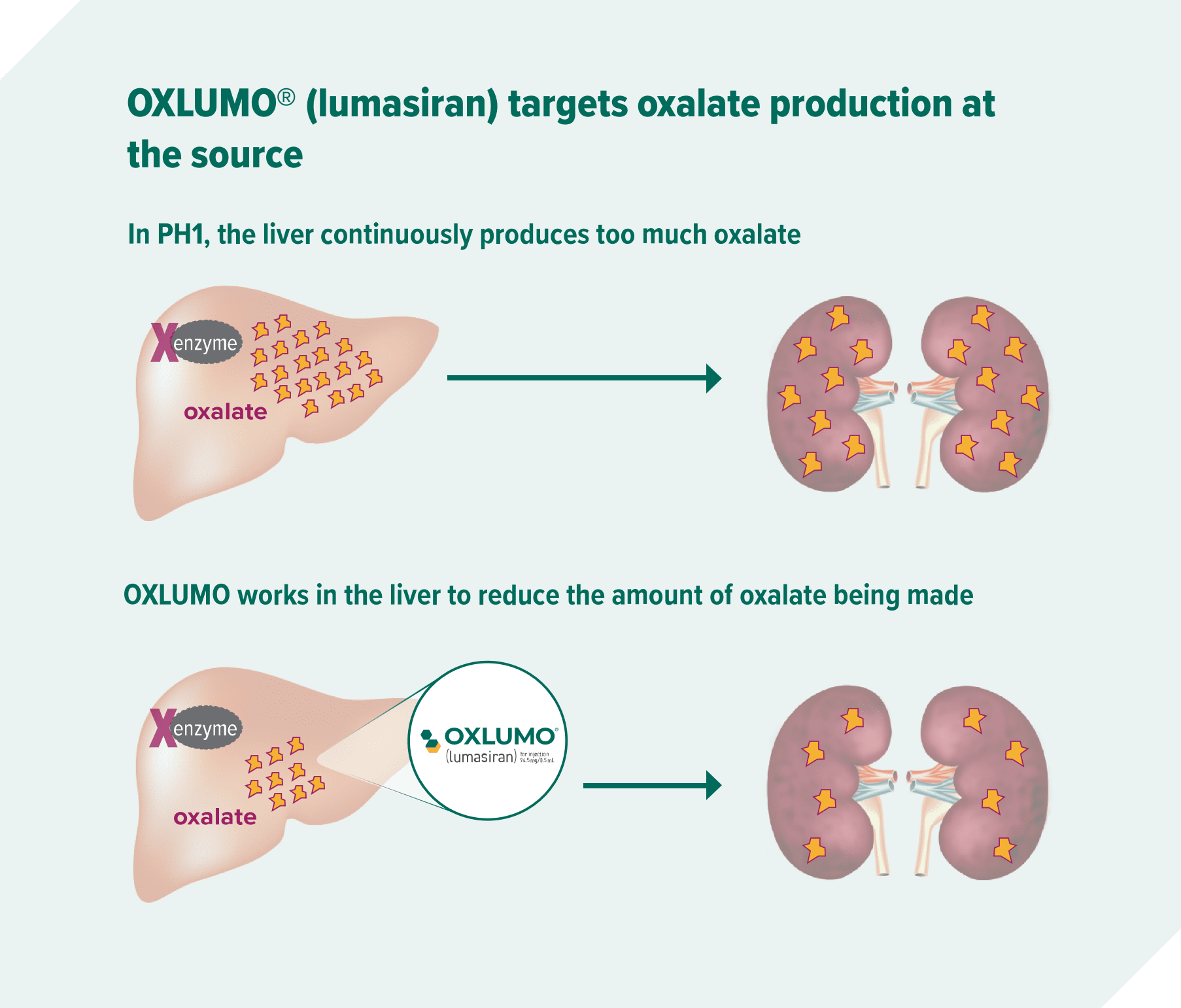Understanding primary hyperoxaluria type 1 (PH1)
PH1 is a rare genetic disease that can affect you or your loved ones. If you have PH1, it is important to work with your doctor.

PH1 causes the body to produce too much oxalate, which can lead to kidney stones and kidney damage
- Oxalate is a waste product that is mostly removed by the kidneys through urine
- When too much oxalate is made, it can damage the kidneys
- When the disease advances and the kidneys aren't working right, oxalate can collect in the blood
- Oxalate may then deposit in other organs and cause injury and permanent damage
Symptoms of PH1 and how it can affect the body
Kidney stones are the most common symptom of PH1 Any kidney stone in a child or adolescent, or recurring kidney stones in adults, can be a sign of PH1.
Too much oxalate in the body can lead to permanent damage When you have too much oxalate in the body, this can lead to permanent damage of the kidneys and other areas of the body. PH1 may require ongoing management and monitoring with your doctor and a well-coordinated care team. This may include nephrologists, urologists, nurses, and other healthcare providers.
PH1 is more than a kidney stone disease Even if someone is not experiencing kidney stones, too much oxalate can cause serious damage to their kidneys or other organs.
PH1 can affect each person differently These are not all the signs and symptoms of PH1. It is important to work closely with your doctor to develop a personalized management plan.
These are not all the signs and symptoms of PH1.
CONNECT WITH AN ALNYLAM EDUCATOR
Learn about primary hyperoxaluria type 1 (PH1) and treatment with OXLUMO® from one of our trained Alnylam Patient Education Liaisons (PELs).
PELs are employees of Alnylam Pharmaceuticals. They are not acting as healthcare providers and are not part of your healthcare team.
We’re here to help you access therapy
Find support services that can help you and your family during treatment with OXLUMO.
